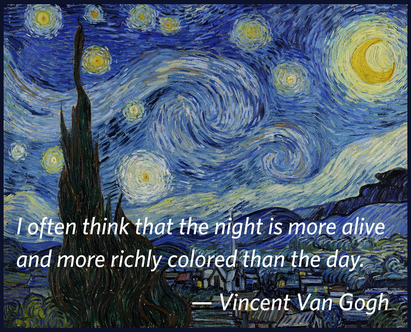
Principles of lightingEffective outdoor lighting should be intentional, well planned, well designed, and use appropriate technologies.
Remember, dark sky does not mean dark ground! What can we do?
What about safety?There is no clear scientific evidence that increased outdoor lighting deters crime. Some studies show increases in lighting result in decreases in safety. While it may make us feel safer, bad outdoor lighting can actually reduce safety. Brighter lights can often mean darker shadows, increased discomfort, and increased glare. Pedestrians and motorists can be temporarily blinded. |
What is light pollution?Most of us are familiar with air, water and land pollution, but did you know that light can also be a pollutant? The inappropriate or excessive use of artificial light — known as light pollution — can have serious environmental consequences for humans, wildlife, and our climate. How does it hurt our planet?Light pollution is not specifically an astronomer problem, a scientist problem, or even just a human problem. Light pollution affects all living things.
How does it affect wildlife?Plants and animals depend on Earth’s daily cycle of light and dark to govern life-sustaining behaviors such as reproduction, nourishment, sleep and protection from predators. Scientific evidence suggests that artificial light at night has negative and deadly effects on many creatures, including amphibians, birds, mammals, invertebrates and plants. In fact, millions of birds die each year by colliding into illuminated buildings. Light pollution affects entire ecosystems.
Wasted Money & ResourcesAbout 35% of light is wasted by unshielded or poorly-aimed outdoor lighting. This is about $3 billion per year worth of energy lost to skyglow. And, that’s $10 per year spent for every man, woman, and child in the US. |
  |
 |
Light Pollution Map |
Further Readings, Additional Resources, & References
- Blask, D., & Brainard, G. (2012). Light Pollution: Adverse Health Effects of Nighttime Lighting. Report 4 of the Council on Science and Public Health (A-12) American Medical Association.
- Cabrera-Cruz, S. A., Smolinsky, J. A., & Buler, J. J. (2018). Light pollution is greatest within migration passage areas for nocturnally-migrating birds around the world. Scientific reports, 8(1), 3261.
- Drake, N. (2019, April 3). Our Nights are Getting Brighter, and Earth is Paying the Price. National Geographic.
- Falchi, F., Cinzano, P., Duriscoe, D., Kyba, C. C., Elvidge, C. D., Baugh, K., Portnov, B. A., Rybnikova, N. A., & Furgoni, R. (2016). The new world atlas of artificial night sky brightness. Science advances, 2(6), e1600377.
- Hall, J., Allen, L., Arion, D., Barentine, J., Caton, D., Liszt, H., McKenna, D., Pipkin, A., Seitzer, P., & Walker, C. (2019, September). Light Pollution, Radio Interference, and Space Debris: Threats and Opportunities in the 2020s. In Bulletin of the American Astronomical Society (Vol. 51, No. 7).
- Harvard Medical School. (2018, August 13). Blue Light Has a Dark Side. Harvard Health Letter.
- Horton, K. G., Nilsson, C., Van Doren, B. M., La Sorte, F. A., Dokter, A. M., & Farnsworth, A. (2019). Bright lights in the big cities: migratory birds’ exposure to artificial light. Frontiers in Ecology and the Environment, 17(4), 209-214.
- Hunter, Tim B., and David L. Crawford. Economics of light pollution. International Astronomical Union Colloquium. Vol. 112. Cambridge University Press, 1991.
- Kraus, Louis J. (2016). Human and environmental effects of light emitting diode (LED) community lighting. Report of The Council on Science and Public Health (A-16) American Medical Association.
- Loss, S. R., Will, T., Loss, S. S., & Marra, P. P. (2014). Bird–building collisions in the United States: Estimates of annual mortality and species vulnerability. The Condor, 116(1), 8-23.
- Morrow, E. N., & Hutton, S. A. (2000). The Chicago Alley Lighting Project: Final Evaluation Report. Illinois Criminal Justice Information Authority.
- Owens, A., Cochard, P., Durrant, J., Perkin, E., & Seymoure, B. (2019). Light pollution is a driver of insect declines. Biological Conservation, in press.
- Scheer, R., & Moss, D. (2012, August 18). Glare-Raising: How Much Energy Does Excessive Nighttime Lighting Waste? Scientific American.
- Sherman, L. W., Gottfredson, D. C., MacKenzie, D. L., Eck, J., Reuter, P., & Bushway, S. (1997). Preventing crime: What works, what doesn’t, what’s promising: A report to the United States Congress. Washington, DC: US Department of Justice, Office of Justi
- Steinbach, R., Perkins, C., Tompson, L., Johnson, S., Armstrong, B., Green, J., Grundy, C., Wilkinson, P., & Edwards, P. (2015). The effect of reduced street lighting on road casualties and crime in England and Wales: controlled interrupted time series analysis. J Epidemiol Community Health, 69(11), 1118-1124.
Multimedia & Documentaries
International Dark-Sky Association. (2013, February 27). Losing the Dark.
National Geographic. (2019, January 25). Light Pollution 101.
National Geographic. (2019, April 4). Under the Dark Skies.
National Geographic. (2015, August 27). Lose Yourself in the Night Sky.
Acknowledgments & Credits
International Dark-Sky Association. https://www.darksky.org/
Light Pollution Map. https://www.lightpollutionmap.info/
